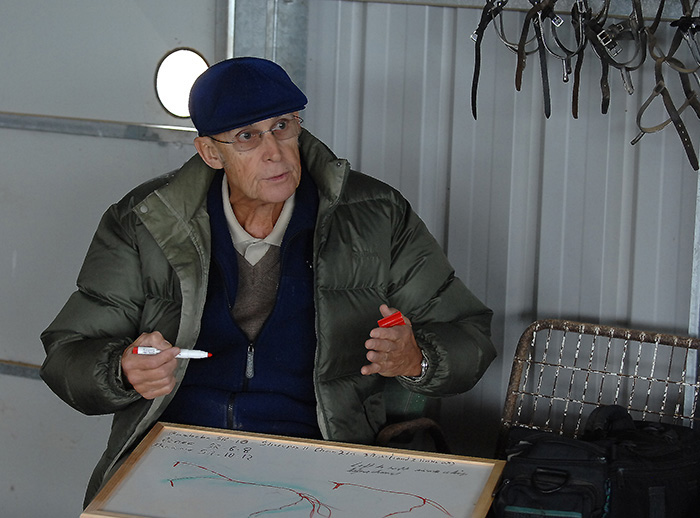
Portuguese trained FEI dressage master, Miguel Tavora considers the equestrian chicken or the egg dilemma… Which comes first – rhythm or balance?
The German training scale is: Rhythm, Losgelassenheit, Contact, Schwung and Collection, as defined in The Principles of Riding, the official handbook of the German Equestrian Federation.
Losgelassenheit is interpreted as suppleness combined with looseness, with complete absence of tension, eg. the horse is unconstrained. The same book says that none of the points of the training scale can be considered in isolation and rhythm, and rhythm and losgelassenheit are put together in the familiarization phase.
Some time ago, I read that a famous German trainer said that his philosophy in training the young horse is rhythm, suppleness, contact, in that order. I really never understood why for almost all Germans, rhythm comes first. I don’t think that a horse contracted and stiff, with difficulty finding balance, for any reason, can achieve or show any kind of correct rhythm.
On my understanding of training a horse, the first thing we have to do is make him relax, to rid him of all stiffness and contractions. To encourage him to use his whole body without any resistance, enabling him to find and use the balance that he should have when he is ridden, only then can he find and move with rhythm.
My thoughts on the subject of rhythm are that the trainer who puts rhythm first on his scale is really working towards making the horse loose, relaxed and supple, achieving losgelassenheit in order to accomplish the rhythm. However rhythm is the result of the horse being able to move under the rider in a way that is supple, loose, and without any tension or constraint.
story continues below the advertisement
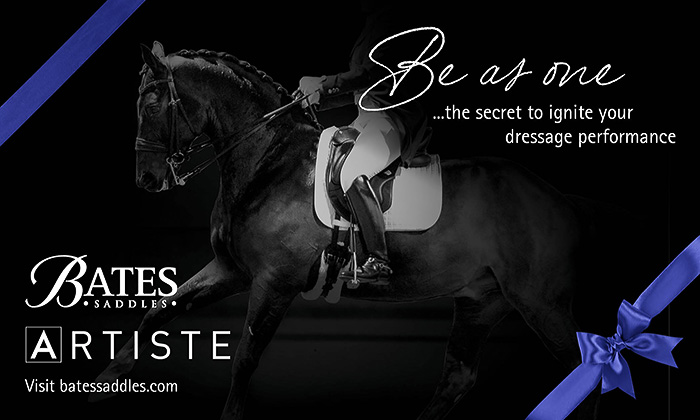
At the beginning of his training, the horse shows stiffness mostly because he is uncomfortable because it is not natural for him to carry a rider on his back, and he is unable to find the correct balance according to the movement that the rider is asking him to do. Furthermore, if the horse is unbalanced, he can’t find the correct rhythm, which means that if I want rhythm, I must have balance. To have balance, that is supple and unconstrained, we must first work towards losgelassenheit.
To develop the qualities of relaxation, looseness and suppleness, we need to have the correct balance. Lateral work is very useful and it is because of this, that I start this work very early in the training of a young horse, and at the beginning of all the daily work sessions with all horses.
In a previous article, Going to Collection Laterally, I explained in detail how I introduce the lateral work on a young horse. I start the training session almost always by doing small circles, around my inside leg (like shoulder-in) on a three metre circle at the walk, with more movement forward than sideways.
If I am able to see the outside shoulder moving forward and not sideways, I know the exercise is correct. I find this exercise very good to relax my horse and achieve some suppleness. If, later on, I find my horse becoming tense or nervous when I am training him in some new movements, like flying changes, passage, piaffe, I break up whatever I am doing with a couple of turns around my inside leg at the walk, and I get my horse relaxed again, and ready to return to the work I was doing.
Transitions from shoulder-in in medium trot on a 20 metre circle, or to a 10 metres circle in collected trot are very useful for developing suppleness at the beginning of the training.
My first priority is to have my horse relaxed, loose, balanced and comfortable to develop and improve further suppleness and impulsion.
Reiner Klimke, in his book, Basic Training of the Young Horse, puts losgelassenheit first on his training scale. He states: “We start by developing Losgelassenheit”, the horse’s logical result of becoming losgelassenheit is that he will move in a rhythm which is constant. To establish the correct constant rhythm, the rider must get his horse balanced. This reinforces my opinion that when training the horse, first of all we have to make him loose, relaxed, supple and balanced, even if we have to work on the minimum of all other requirements that he must use to go correctly.
Readers should try to find a copy of Miguel Tavora’s wonderful book:
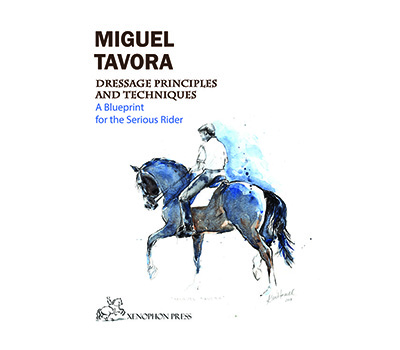

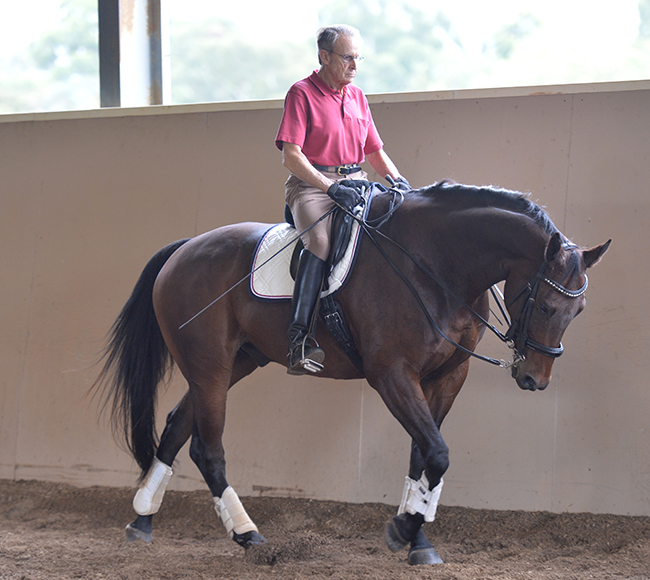
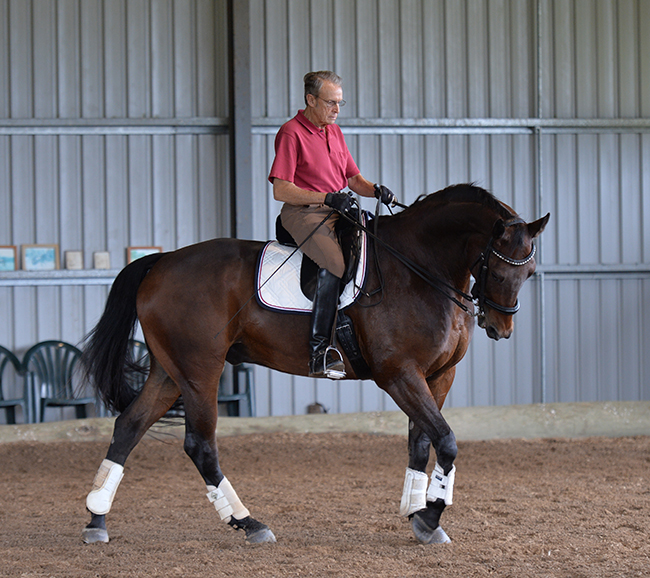
Where do we find a copy of Miguel’s book?
I’m trying to find out – I wrote to Diane Tavora who was selling them, and she hasn’t replied. You can certainly get them from the publisher, Xenophon